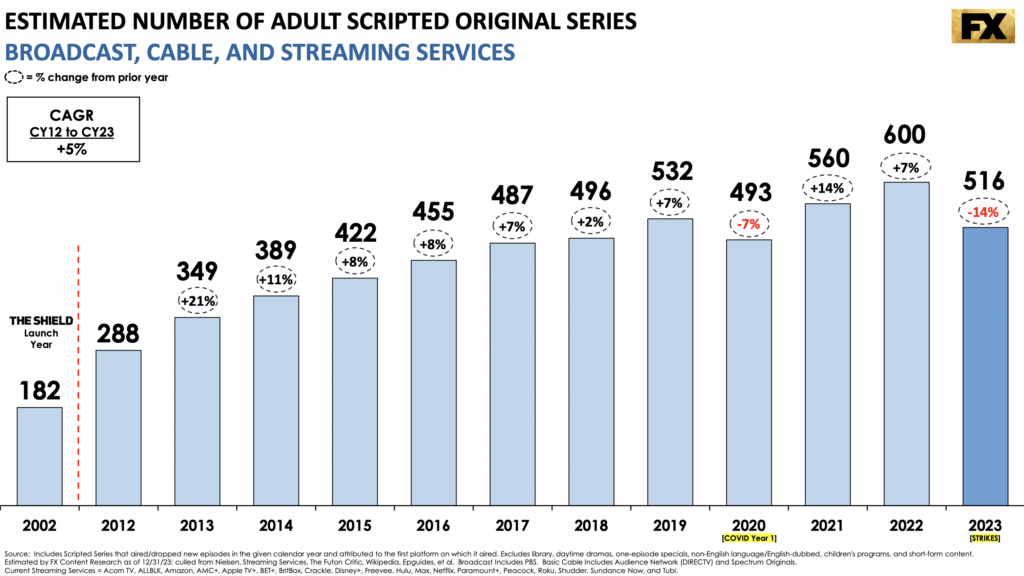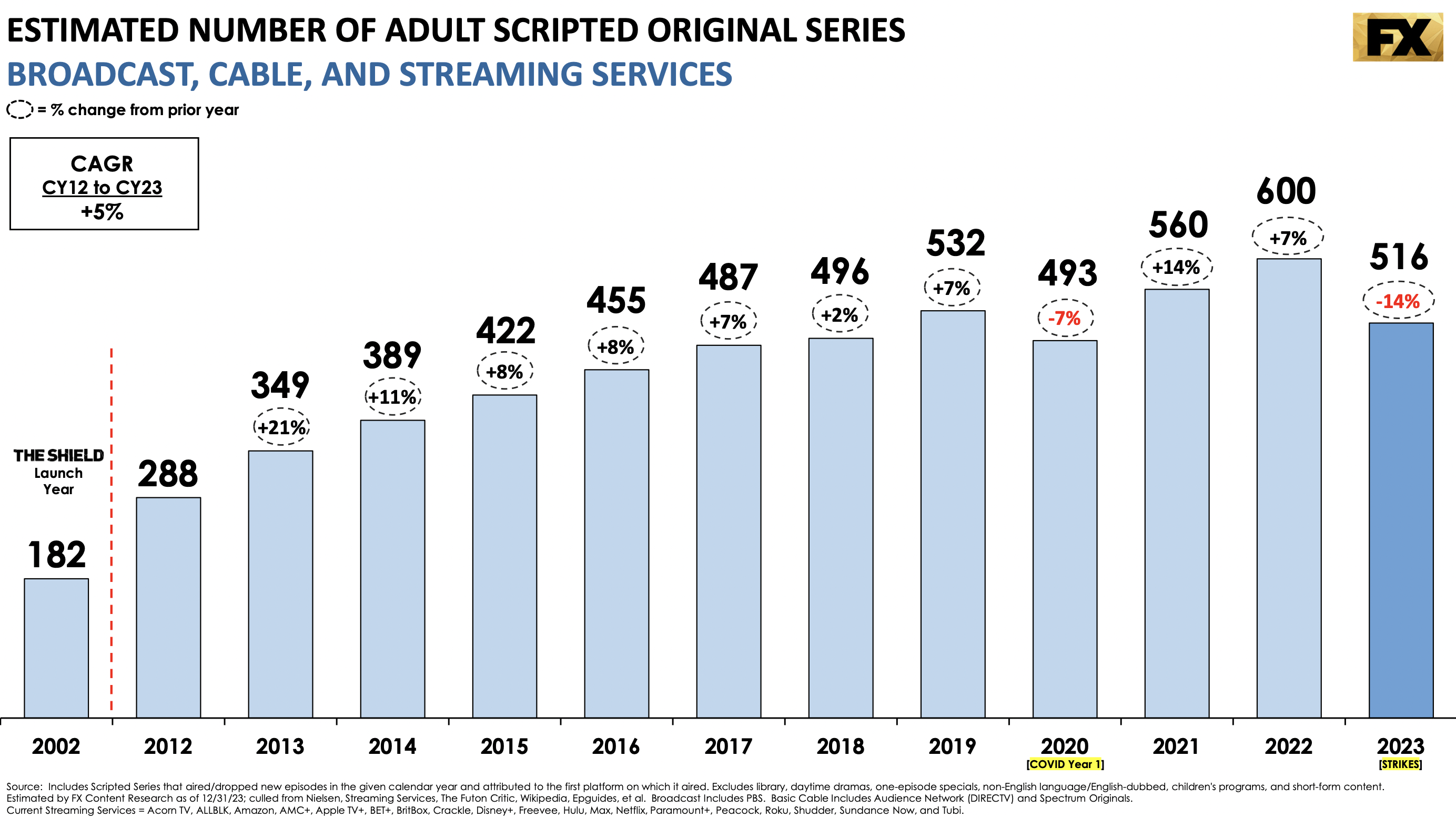If you Google “Peak TV”, the first search result is a Wikipedia article called “Golden Age of Television (2000s-present)” It reflects an era that started a little earlier with series like HBO’s The Wire and NBC’s The West Wing, but obviously carried on through the early 2000s, and broadly speaking, continues to this day.
The Wikipedia article prefers “Golden Age”, but also talks about the era being that of “Prestige TV” or “Peak TV.”
But that’s only one side of the coin, because there’s another associated, but actually very different use of the term “Peak TV.” Because Peak TV was the phrase coined by FX’s John Landgraf back in 2015, and who for years has been presenting a chart that shows the number of adult original scripted series produced in each year and available to US audiences.
This is a number that has risen year-on-year as first US cable networks leant into producing original dramas to differentiate their channels, and then later streamers emerged, with the result that hundreds more TV shows were being created.
He’s just presented the most chart.

Landgraf’s latest chart shows that in 2023, the number of dramas fell 14%, a bigger percentage than even during the first part of the pandemic. It’s certainly true that this was a strike effected year as the chart above highlights.
Now it’s true that Landgraf did say in 2015: “This is simply too much television. My sense is that 2015 or 2016 will represent peak TV in America, and that we’ll begin to see declines coming the year after that and beyond.”
And the chart above shows that this simply didn’t happen. But with cancellations, and even sometimes the shelving of shows that have already been shot and produced, it does feel that this is a tipping point, and that broad number will decline.
“Peak TV” in this instance is simply the number of shows. It doesn’t reference the quality or artistic merit.
But there’s probably a link between the two. If I have more of something, then there’s an increased chance, one of those things will be good. And there are definitely still lots of really good TV dramas being produced.
I think some folk do get confused about the two terms, especially when the more “inside TV” definition of Peak TV is used to somehow suggests that quality is falling.
There certainly are wider changes in the TV landscape likely to happen. The “gourmet cheeseburger” is a thing. Some streaming shows do look a lot like old US network TV shows in that they’re not demanding, not really all that smart, but they entertain people for a bit, keep subscribers from unsubscribing, or provide something for advertisers to advertise around.
But with shows like Happy Valley, Succession, The Last of US, and many more still being made and watched, the golden era definition cannot be said to have ended.
Peak TV and Peak TV mean different things.


Comments
One response to “Peak TV vs Peak TV”
“Too much television” is rather apt in 2024. I add more things to my “should watch someday” list than I ever remove from the list. So it goes.